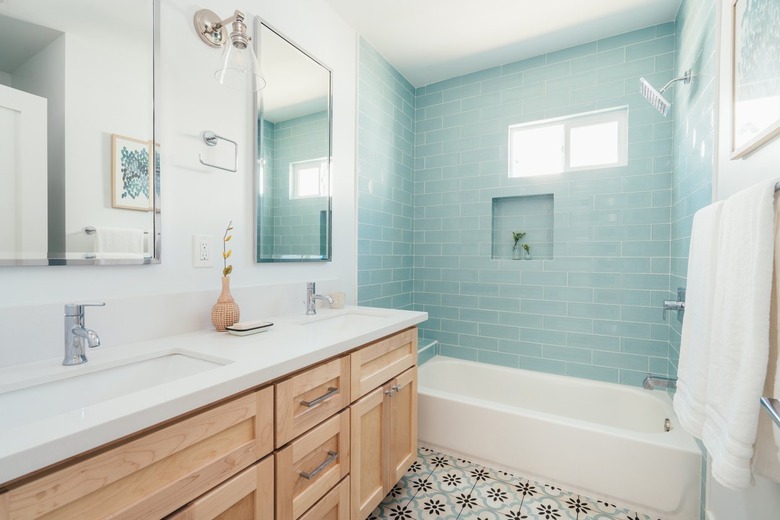What Is The Standard Shower Valve Height?
We may receive a commission on purchases made from links.
Unless you're installing the fittings for a new shower, you probably haven't given much thought to your shower valve height. But where you place your shower fittings matters — and if you're in the midst of a bathroom remodel, then it's an important decision to make.
Tall people are usually well aware of how uncomfortable it is to have to stoop down to rinse their hair under a showerhead that is set too low. Similarly, you don't want to find yourself awkwardly bending over in the shower as soap drips into your eyes while you feel around for the tap when you want to adjust the temperature or water pressure. By following a few standard guidelines and considering your family's personal needs, you can determine the proper height your shower valve as well as other shower fittings.
Proper Shower Valve Height
Proper Shower Valve Height
The height of the valve for a shower depends upon whether you need it for a shower stall or a shower set in a bathtub. Showers set in bathtubs require lower valve heights because the valve must connect to both the shower and the bath tap. A height of 28 inches, or 2 feet 4 inches, is standard for valves in bathtub shower units. For shower stalls, install the valve at the standard height of 48 inches, or 4 feet. Install faucets at the same height as the valve, equidistant from the valve.
Standard Height of a Showerhead
Standard Height of a Showerhead
Installing the showerhead at the right height helps ensure that everyone in your home can comfortably fit under it when taking a shower. The minimum standard height for a showerhead is 72 inches, but the general recommendation is to set it 80 inches above the shower pan. At that height, everyone can stand under it, even very tall people. If you want it even higher, you're limited by the height of the shower stall, but one solution is to run the pipe from the faucet above the shower and install a rainfall showerhead.
What Is the Distance Between Fittings?
What Is the Distance Between Fittings?
In a shower stall with a head set at 72 inches and a valve set at 48 inches, the piping between the fittings is 24 inches, or 2 feet. In a tub with a head at 72 inches and a valve at 28 inches, the space between the fittings is 44 inches, or 3 feet 8 inches. The spacing between these elements can vary. For instance, if you install a valve at 48 inches but move the head to 76 inches, then 52 inches of space exists.
It's a good idea to conform to the same spacing as that of a widespread bathroom faucet, that is, the hot- and cold-water handles are 8 inches from one another, one 4 inches to the right of the valve and the other 4 inches to the left of the valve.
Personal Choice and Local Codes
Personal Choice and Local Codes
Personal choice and local codes are two of the most important considerations when installing shower fittings. For instance, though sources recommend 72 inches as standard for heads, with 76 inches as preferred by some, if someone in your family stands 6 foot 5 (77 inches) tall, you need a higher head. Ultimately, you can install fittings at any height that makes you comfortable as long as you adhere to local plumbing codes. Always check with local codes before undertaking any type of installation.
